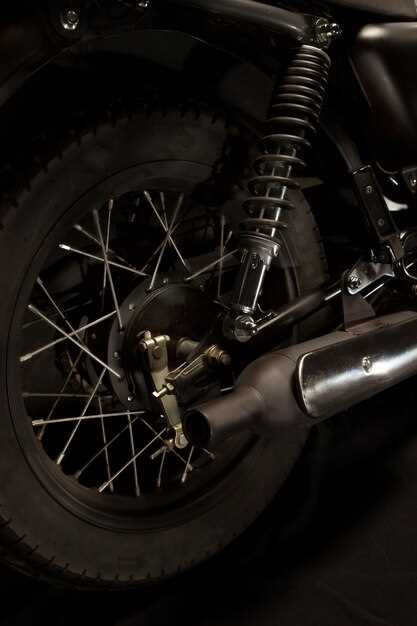
When it comes to navigating through diverse landscapes, the right set of tires can make all the difference. Mixed terrains–including gravel roads, muddy trails, and rocky paths–present unique challenges that require careful consideration when selecting tires. This article aims to simplify the tire selection process, ensuring that drivers can confidently tackle any terrain they encounter.
Understanding Terrain Types is crucial for effective tire selection. Each type of terrain demands specific tire characteristics such as tread pattern, rubber composition, and sidewall strength. For instance, aggressive tread patterns are ideal for off-road conditions, as they provide better grip on loose surfaces, whereas smooth and rounded tread designs excel on paved roads, promoting fuel efficiency and comfort.
Equipped with the right knowledge, you can evaluate your driving needs and choose the most suitable tires for varying conditions. By considering factors such as vehicle type, driving habits, and expected terrain, you can enhance both performance and safety on your journeys. This guide will walk you through the essential aspects of tire selection to ensure you make informed decisions tailored to your driving experiences.
Understanding Terrain Types for Tire Selection
When it comes to choosing the right tires, understanding different terrain types is crucial for optimizing performance and safety. Each terrain presents unique challenges, and tires must be tailored to meet these requirements effectively.
1. Asphalt and Concrete: These surfaces are typically found in urban environments. Tires for this terrain are designed with a smooth tread pattern for better grip and reduced rolling resistance. Features like low noise levels and excellent wet traction are also important.
2. Off-Road: For gravel, mud, or rocky paths, off-road tires are essential. They usually possess deep treads and reinforced sidewalls to provide traction and durability. Patterns with large voids help to displace mud and enhance grip on loose surfaces.
3. Mixed Terrain: Mixed terrain tires strike a balance between on-road and off-road capabilities. They often feature a hybrid tread design, allowing for efficient performance on diverse surfaces. This versatility makes them ideal for drivers who transition between urban and rural settings.
4. Snow and Ice: In winter conditions, tires specifically designed for snow and ice offer better traction and handling. These tires have specialized tread patterns and compounds that remain flexible in cold temperatures, improving grip on slippery surfaces.
5. Sand: Sand terrain requires specialized tire designs with wide, paddle-like treads that prevent sinking. These tires help distribute the vehicle’s weight over a larger surface area, promoting flotation and allowing for easier maneuverability.
Understanding these terrain types is fundamental in making an informed tire choice. Selecting the right tire can significantly enhance performance, safety, and overall driving experience across various conditions.
Key Features to Look for in Mixed Terrain Tires

When selecting tires for mixed terrain, several key features are essential to ensure optimal performance and safety. First and foremost, tread design plays a crucial role. Look for an aggressive tread pattern that includes large, widely spaced lugs, which provides enhanced traction on both loose and solid surfaces.
Another important feature is rubber compound. A softer rubber compound offers better grip on rocky or muddy conditions while maintaining durability on pavement. Tires with a dual-compound structure can provide the best of both worlds, offering comfort and longevity.
Sidewall strength is also crucial. Tires designed for mixed terrain typically feature reinforced sidewalls to withstand rough trails and obstacles. This reduces the risk of punctures and damage when navigating through rugged landscapes.
Additionally, consider the tire’s size and aspect ratio. A wider tire can improve stability and flotation in loose surfaces like sand and mud, while a lower aspect ratio can provide better handling and response on paved roads. Make sure to choose a size that is compatible with your vehicle for optimal performance.
Lastly, pay attention to the tire’s ability to self-clean. Tread patterns that allow mud and debris to escape will prevent clogging and maintain traction throughout your ride. This feature is particularly important in changing conditions, ensuring consistent performance.
Maintenance Tips for Longevity of Mixed Terrain Tires

To maximize the lifespan and performance of your mixed terrain tires, regular maintenance is essential. Here are some effective tips to ensure your tires remain in optimal condition.
1. Regular Pressure Checks: Maintain the recommended air pressure for your tires. Under-inflated tires can lead to increased wear and reduced fuel efficiency, while over-inflation can decrease traction. Check tire pressure at least once a month.
2. Rotate Tires Periodically: Rotate your tires every 5,000 to 7,500 miles or according to the vehicle manufacturer’s guidelines. This practice helps to ensure even wear across all tires, extending their overall lifespan.
3. Inspect Tread Depth: Regularly check the tread depth to ensure it meets safety standards. Use the penny test: insert a penny into the tread with Lincoln’s head facing down; if you can see the top of his head, it’s time to replace your tires.
4. Clean Tires Regularly: Remove dirt, mud, and debris that can accumulate in the tread. Cleaning your tires prevents the degradation of rubber and helps maintain traction, especially on mixed terrains.
5. Avoid Overloading: Adhere to the weight limits specified by your vehicle manufacturer. Overloading can increase tire wear and lead to blowouts, particularly on varying surfaces.
6. Drive Cautiously: Be mindful of your speed and driving style. Avoid sudden accelerations, hard braking, and sharp turns, especially on uneven terrain, as these actions can stress your tires.
7. Store Properly: If you need to store your tires, keep them in a cool, dry place away from direct sunlight. If possible, store them standing up to prevent flat spots from developing.
By following these maintenance tips, you can enhance the life and performance of your mixed terrain tires, allowing for better handling and safer driving across diverse conditions.



































